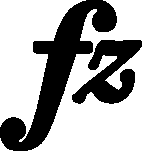



|
b. 285-286
|
composition: Op. 21, Concerto in F minor, Mvt I
..
In the main text we add a cautionary category imprint: Editorial revisions |
||||||||||
|
b. 285
|
composition: Op. 21, Concerto in F minor, Mvt I
..
The version of FE (→EE) is most probably a Terzverschreibung error – in the recapitulation A has an almost unchanged accompaniment, with respect to the exposition, in the entire theme (from bar 273); there are also no visible traces of correction in print in FE. category imprint: Differences between sources issues: Errors in FE , Terzverschreibung error |
||||||||||
|
b. 285-289
|
composition: Op. 21, Concerto in F minor, Mvt III
..
In the main text we give the cresc. written in bar 285 in A and extended by dashes to the end of bar 289 (we suggest to extend the dashes to the end of bar 290 so that they lead to a natural point, which in this case is category imprint: Differences between sources issues: Errors in GE , GE revisions , Authentic corrections of GE |
||||||||||
|
b. 285
|
composition: Op. 11, Concerto in E minor, Mvt I
..
The missing slur in FE (→GE1→GE2) must be an oversight of the engraver (or of Chopin in [A]) – cf. all 7 similar bars. category imprint: Differences between sources issues: EE revisions , Errors in FE , GE revisions |
||||||||||
|
b. 285
|
composition: Op. 11, Concerto in E minor, Mvt I
..
Since the obvious destination of the category imprint: Differences between sources; Editorial revisions issues: EE revisions , Scope of dynamic hairpins , GE revisions |

 before e
before e 2 in bar 285 and a
2 in bar 285 and a  before G in bar 286.
before G in bar 286.





 in bar 291). The repetition of the indication present in
in bar 291). The repetition of the indication present in 


 in
in 

 in the next bar, in the main text, we extend the mark present in
in the next bar, in the main text, we extend the mark present in